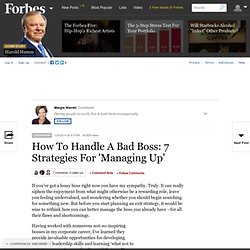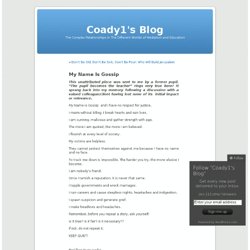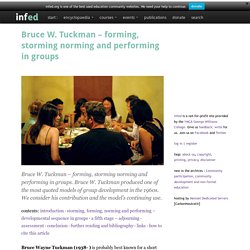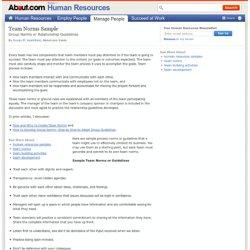

Simon Sinek: How great leaders inspire action. Myers-briggs-test. How to deal with nightmare colleagues. It has emerged that working with Kiefer Sutherland is probably only sustainable for 24 hours or so.

“I did 24. It was terrible. I hated every moment of it. Kiefer was the most unprofessional dude in the world,” said Freddie Prinze Jr at the weekend. He added that the experience had made him want to quit acting, heartbreaking news for those among us who were teenage girls in 1998. It’s not clear what the artist formerly known as Prinze Jr had expected from working alongside a renowned renegade, who approaches the problems of international negotiation and opening a can of sweetcorn with exactly the same implements. How should we deal with them?
How Leaders Can Overcome Obstacles for Change. How To Handle A Bad Boss: 7 Strategies For 'Managing Up' If you’ve got a lousy boss right now you have my sympathy.

Truly. It can really siphon the enjoyment from what might otherwise be a rewarding role, leave you feeling undervalued, and wondering whether you should begin searching for something new. But before you start planning an exit strategy, it would be wise to rethink how you can better manage the boss you already have –for all their flaws and shortcomings. Having worked with numerous not-so-inspiring bosses in my corporate career, I’ve learned they provide invaluable opportunities for developing executive leadership skills and learning ‘what not to do’ when managing people who work for you.
You just have to be proactive in looking for them and ready to practice some real self-leadership. New research has found that being overworked is not the reason people leave their jobs. However fixed in their ways your boss may be, you can always learn ways to better manage him or her. Leadership in a Networked World. Communication. Leadership Fables: The Frog, The Crab, and The Monkey. By Calvin Guyer on June 28th, 2013 Leadership Fable: The Frog If you throw a frog into a boiling pot of water, the frog will fight for all of his life to get out.

If, however, you put the frog into a pot of cold water then gradually increase the heat, the frog will adjust to his environment. Eventually, the warm water will zap him of his strength and when he finally figures that out he is too weak to fight. Leadership Fable: The Crab Put a crab in a bucket and he’ll try to get a claw on the edge of the bucket and pull himself out. Leadership Fable: The Monkey Researchers put six monkeys into a cage with a ladder and a bunch of bananas at the top. Which Leadership Fable Applies to Your Organization? Employees that are not engaged, or worse, actively disengaged, are like the frog in the pot of water.
Look deeply within your organization and ask how these fables apply to you. What motivates you! My Name Is Gossip. This unattributed piece was sent to me by a former pupil.

“The pupil becomes the teacher” rings very true here! It sprang back into my memory following a discussion with a valued colleague/client having lost none of its initial impact or relevance. My Name is Gossip and I have no respect for justice. I maim without killing. I break hearts and ruin lives. I am cunning, malicious and gather strength with age. The more I am quoted, the more I am believed. I flourish at every level of society. My victims are helpless. They cannot protect themselves against me because I have no name and no face. To track me down is impossible. I am nobody’s friend. Once I tarnish a reputation, it is never that same. Bruce W. Tuckman – forming, storming norming and performing in groups. Bruce W.

Tuckman – forming, storming norming and performing in groups. Bruce W. Tuckman produced one of the most quoted models of group development in the 1960s. We consider his contribution and the model’s continuing use. contents: introduction · storming, forming, norming and performing – developmental sequence in groups · a fifth stage – adjourning · assessment · conclusion · further reading and bibliography · links · how to cite this article Bruce Wayne Tuckman (1938- ) is probably best known for a short article – ‘Developmental sequence in small groups’ first published in 1965. Forming, storming, norming and performing – developmental sequence in groups Even a quick glance at the literature of group development reveals a wide range of theoretical models concerning developmental processes. The Forming Stage of Team Development. Team Norms Sample. Every team has two components that team members must pay attention to if the team is going to succeed.

The team must pay attention to the content (or goals or outcomes expected). The team must also carefully shape and monitor the team process it uses to accomplish the goals. Team process includes: How team members interact with and communicate with each other, How the team members communicate with employees not on the team, and How team members will be responsible and accountable for moving the project forward and accomplishing the goals. These team norms or ground rules are established with all members of the team participating equally. In prior articles, I discussed: Here are sample process norms or guidelines that a team might use to effectively conduct its business.
Encourage Candor at Work.